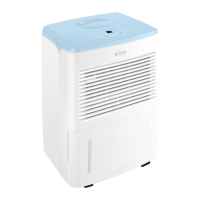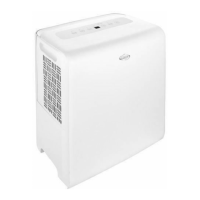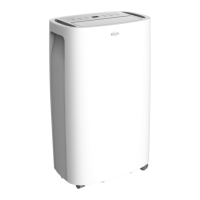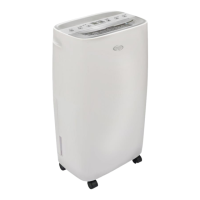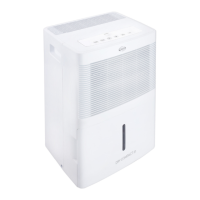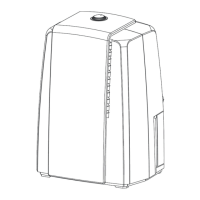Do you have a question about the Argo ALICE 13 and is the answer not in the manual?
General safety instructions to avoid risks to people and property.
Explanation of symbols used throughout the manual for clarity and safety.
Various direct methods to detect refrigerant leaks.
Methods for detecting refrigerant leaks indirectly.
Fundamental properties and characteristics of HC R290.
Key physical and chemical properties of HC R290 refrigerant.
Identification of hazards associated with R290 refrigerant.
Immediate steps for safety during an accidental release.
Subsequent actions after immediate safety measures are taken.
Overview of the dehumidifier unit and its models.
Explanation of how the dehumidifier removes moisture from the air.
Schematic showing the electrical connections of the unit.
Top and bottom views of the main PCB with component labels.
Top and bottom views of the display board with component labels.
Detailed instructions for operating the control panel.
Covers drying mode, humidity range, and unit protection features.
Important notes and safety precautions before performing maintenance.
Covers electrical and refrigerant safety during maintenance.
Methods for draining collected water from the unit.
Includes grille, case, and air filter cleaning instructions.
Fundamental safety rules for performing maintenance.
Steps to prepare the environment and unit before maintenance.
Cautions for electrical parts and refrigeration system maintenance.
Troubleshooting flowchart for temperature sensor errors.
Troubleshooting steps when the unit fails to start.
Steps from before disassembly to removing the front panel.
Steps for removing rear case, top cover, air duct, and electric box.
Conversion chart for Celsius and Fahrenheit temperatures.
General safety instructions to avoid risks to people and property.
Explanation of symbols used throughout the manual for clarity and safety.
Various direct methods to detect refrigerant leaks.
Methods for detecting refrigerant leaks indirectly.
Fundamental properties and characteristics of HC R290.
Key physical and chemical properties of HC R290 refrigerant.
Identification of hazards associated with R290 refrigerant.
Immediate steps for safety during an accidental release.
Subsequent actions after immediate safety measures are taken.
Overview of the dehumidifier unit and its models.
Explanation of how the dehumidifier removes moisture from the air.
Schematic showing the electrical connections of the unit.
Top and bottom views of the main PCB with component labels.
Top and bottom views of the display board with component labels.
Detailed instructions for operating the control panel.
Covers drying mode, humidity range, and unit protection features.
Important notes and safety precautions before performing maintenance.
Covers electrical and refrigerant safety during maintenance.
Methods for draining collected water from the unit.
Includes grille, case, and air filter cleaning instructions.
Fundamental safety rules for performing maintenance.
Steps to prepare the environment and unit before maintenance.
Cautions for electrical parts and refrigeration system maintenance.
Troubleshooting flowchart for temperature sensor errors.
Troubleshooting steps when the unit fails to start.
Steps from before disassembly to removing the front panel.
Steps for removing rear case, top cover, air duct, and electric box.
Conversion chart for Celsius and Fahrenheit temperatures.
| Airflow | 115 m³/h |
|---|---|
| Display | LED |
| Noise level | 43 dB |
| Product color | White |
| Built-in display | Yes |
| Water tank capacity | 3 L |
| Suitable for room area up to | 15 m² |
| Suitable for room volume up to | - m³ |
| AC input voltage | 220 - 240 V |
| AC input frequency | 50 Hz |
| Power consumption (typical) | 220 W |
| Operating temperature (T-T) | 5 - 32 °C |
| Operating relative humidity (H-H) | 35 - 80 % |
| Depth | 225 mm |
|---|---|
| Width | 353 mm |
| Height | 496 mm |
| Weight | 11500 g |
